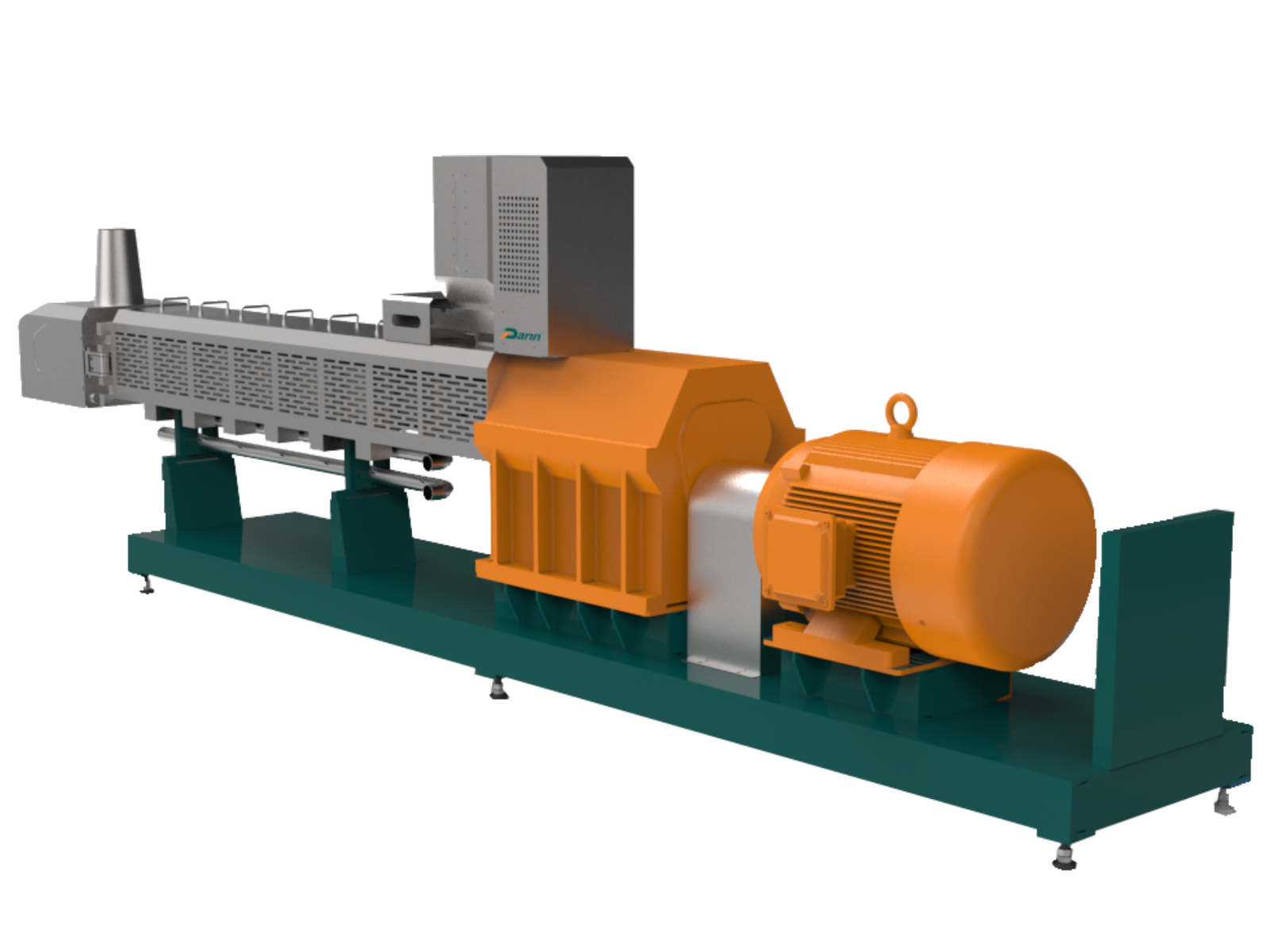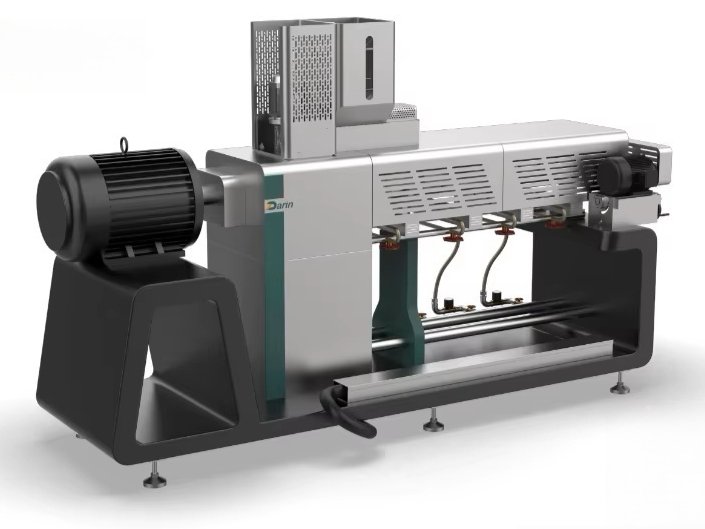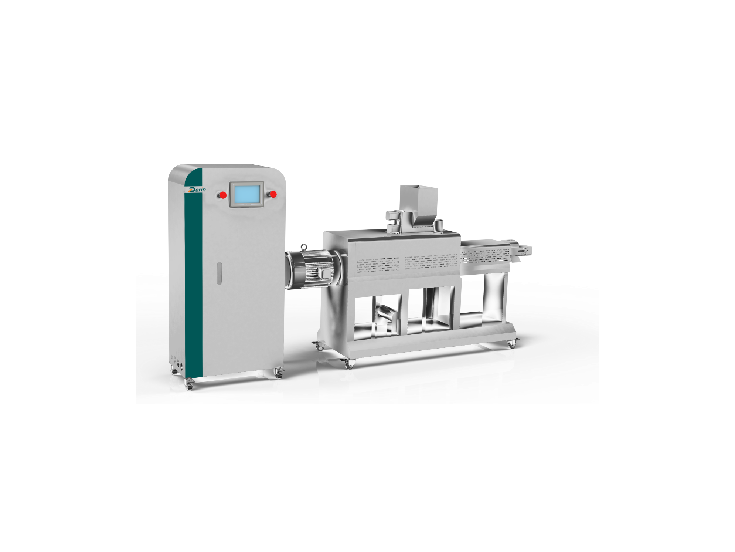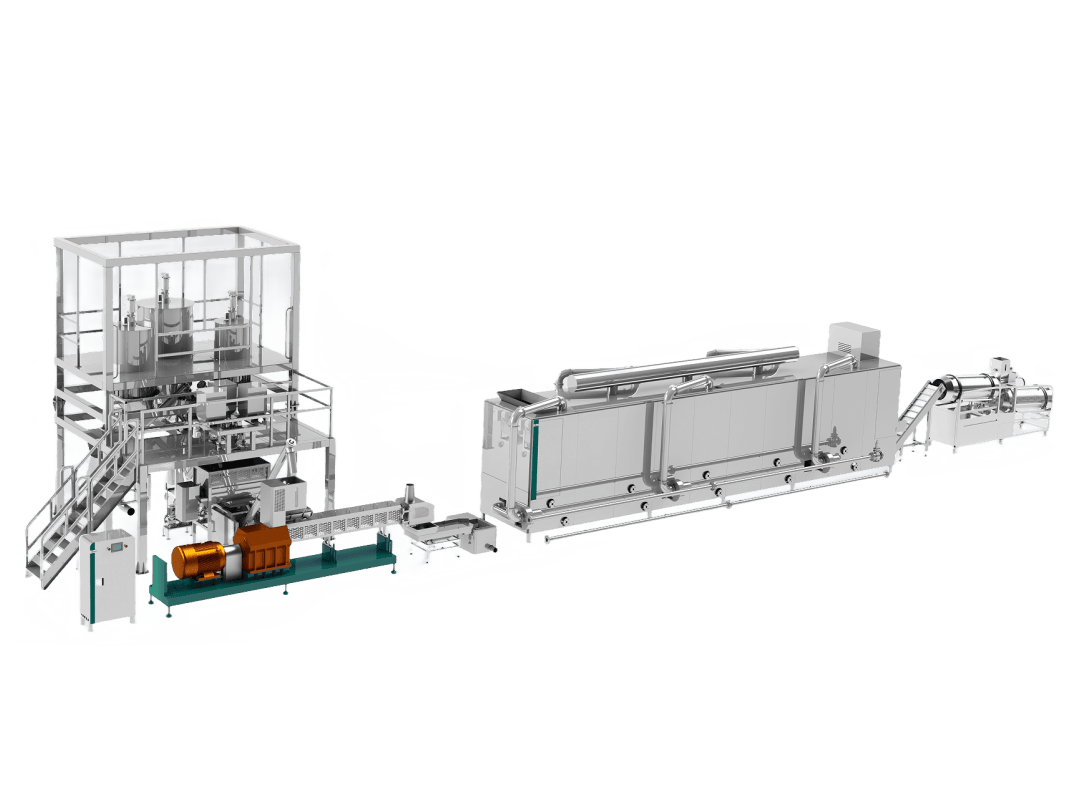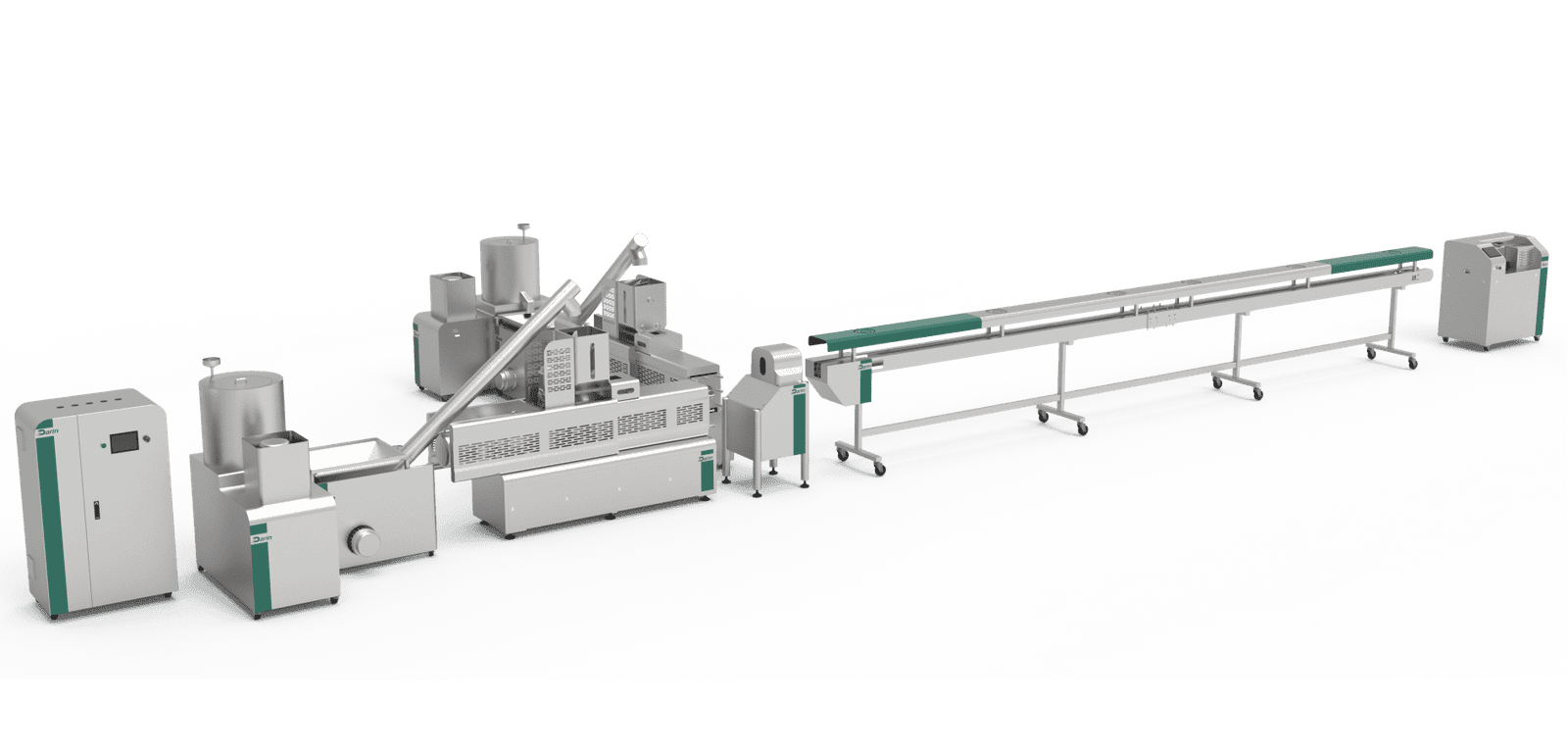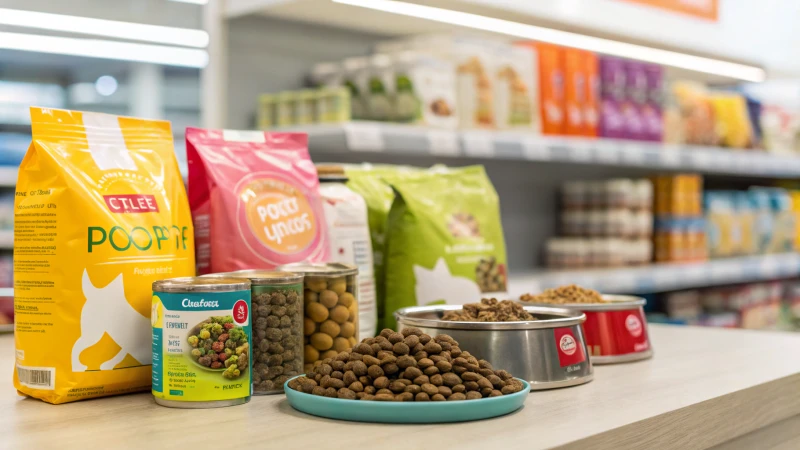
## **Why Should You Consider Extruded Foods?**
Many food manufacturers and consumers face challenges with traditional food processing methods, such as inconsistent texture, poor digestibility, and reduced shelf life. These problems lead to lower product quality, increased food waste, and higher production costs. **Extruded foods** provide a solution by offering **better texture, enhanced nutrition, longer shelf life, and improved digestibility.**
## **What Are the Benefits of Extruded Foods?**
**Extruded foods have numerous advantages, including improved texture, better digestibility, extended shelf life, enhanced food safety, and cost-effective production. This method also allows for the creation of customized food products with precise nutritional content and consistent quality.**
## **Why Is Extrusion a Game-Changer for Food Processing?**
Extrusion technology has transformed the food industry, making food safer, tastier, and more nutritious. Let's explore its major benefits.
---
## **1. How Does Extrusion Improve Food Texture and Shape?**
### **Uniform Texture and Shape Control**
Extrusion allows precise control over food texture and shape, ensuring uniformity in each batch. This is essential for products like breakfast cereals, snacks, and pet food, where consistency matters.
### **Better Crispiness and Crunchiness**
Foods like puffed snacks and breakfast cereals gain a crispy texture due to controlled expansion during the extrusion process.
### **Customization for Different Preferences**
By adjusting moisture, temperature, and pressure, manufacturers can produce different textures—from soft and chewy to crispy and crunchy.
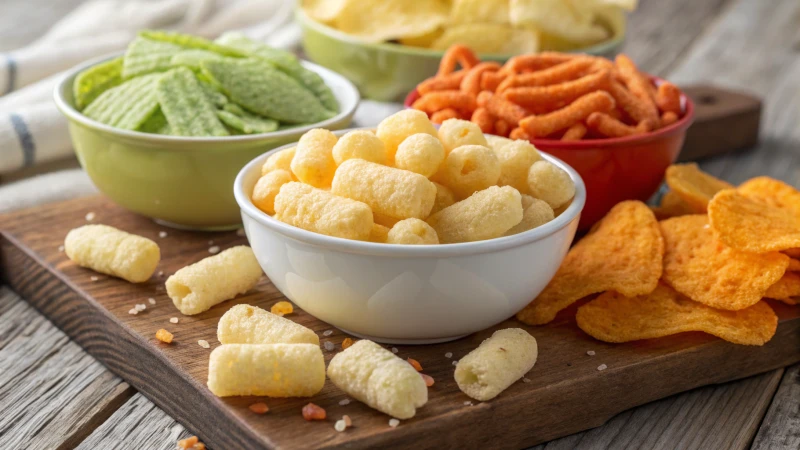 An artistic arrangement of various extruded snacks on rustic wood
An artistic arrangement of various extruded snacks on rustic wood
Extruded foods always have a crunchy texture.False
Extrusion can produce both crunchy and soft foods, depending on the processing conditions.
2. How Does Extrusion Enhance Nutritional Value?
Improved Digestibility
The high-temperature and pressure conditions in extrusion break down complex carbohydrates and proteins, making them easier to digest. This is particularly beneficial for baby food, pet food, and animal feed.
Retention of Essential Nutrients
Modern extrusion techniques help retain important vitamins and minerals, ensuring better nutrient availability.
Reduction of Antinutritional Factors
Certain raw ingredients contain antinutritional factors (like phytates and lectins) that hinder nutrient absorption. Extrusion helps neutralize these compounds, making nutrients more bioavailable.
Extrusion always destroys nutrients in food.False
Controlled extrusion preserves and even enhances certain nutrients, improving their bioavailability.
3. Why Do Extruded Foods Have a Longer Shelf Life?
Lower Moisture Content
Extrusion significantly reduces moisture in food, preventing bacterial and mold growth, which extends shelf life.
Enhanced Food Stability
Foods processed via extrusion have a longer shelf life without the need for artificial preservatives, making them ideal for storage and distribution.
Improved Packaging Efficiency
Since extruded foods are lightweight and compact, they require less storage space and are easier to transport.

Extruded foods spoil faster than traditionally processed foods.False
Extrusion reduces moisture and microbial contamination, increasing shelf life.
4. How Does Extrusion Improve Food Safety?
Elimination of Microorganisms
The high temperatures used in extrusion destroy harmful bacteria, molds, and pathogens, making food safer for consumption.
Reduced Need for Chemical Preservatives
Since extrusion naturally extends shelf life, it reduces the need for artificial preservatives.
Consistent Quality Control
The precise conditions of extrusion ensure food products are consistently safe and free from contaminants.
Extrusion does not kill harmful bacteria in food.False
High heat and pressure in extrusion eliminate bacteria and other pathogens.
5. How Is Extrusion Cost-Effective for Food Production?
High Production Efficiency
Extrusion is a continuous process, meaning manufacturers can produce large volumes of food quickly, reducing labor and operational costs.
Waste Reduction
Since extrusion can repurpose byproducts (such as rice bran or wheat middlings), it minimizes food waste and maximizes raw material utilization.
Energy Efficiency
Modern extruders are designed for efficient energy use, making them more sustainable compared to traditional cooking methods.
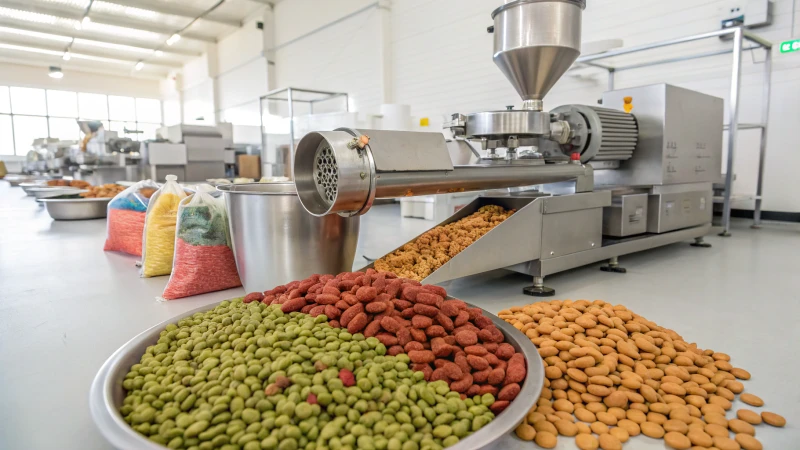
Extrusion is an expensive process with low production efficiency.False
Extrusion is highly efficient and cost-effective for large-scale food production.
Common Applications of Extruded Foods
| Food Category | Examples |
|---|---|
| Breakfast Cereals | Cornflakes, puffed rice, granola |
| Snacks | Potato chips, cheese puffs, tortilla chips |
| Pet Food | Dry kibble for dogs and cats |
| Baby Food | Instant cereals, fortified baby snacks |
| Pasta Products | Macaroni, spaghetti, instant noodles |
| Meat Alternatives | Textured vegetable protein (TVP), plant-based meat substitutes |
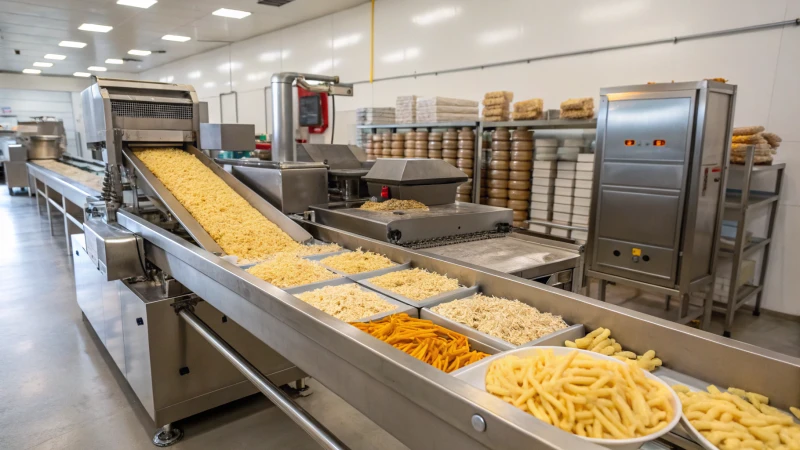
Extrusion is only used for making snack foods.False
Extrusion is used in breakfast cereals, pet food, meat alternatives, and more.
Conclusion: Is Extrusion the Future of Food Processing?
The extrusion process offers significant benefits, including better texture, enhanced digestibility, extended shelf life, and improved food safety. Whether for snacks, cereals, pet food, or meat alternatives, extrusion continues to revolutionize the food industry by providing high-quality, nutritious, and cost-effective products.
Want to Learn More About Extrusion Technology?
If you're interested in extruded food production, contact us today. Our experts can help you choose the right extrusion techniques for your business.


